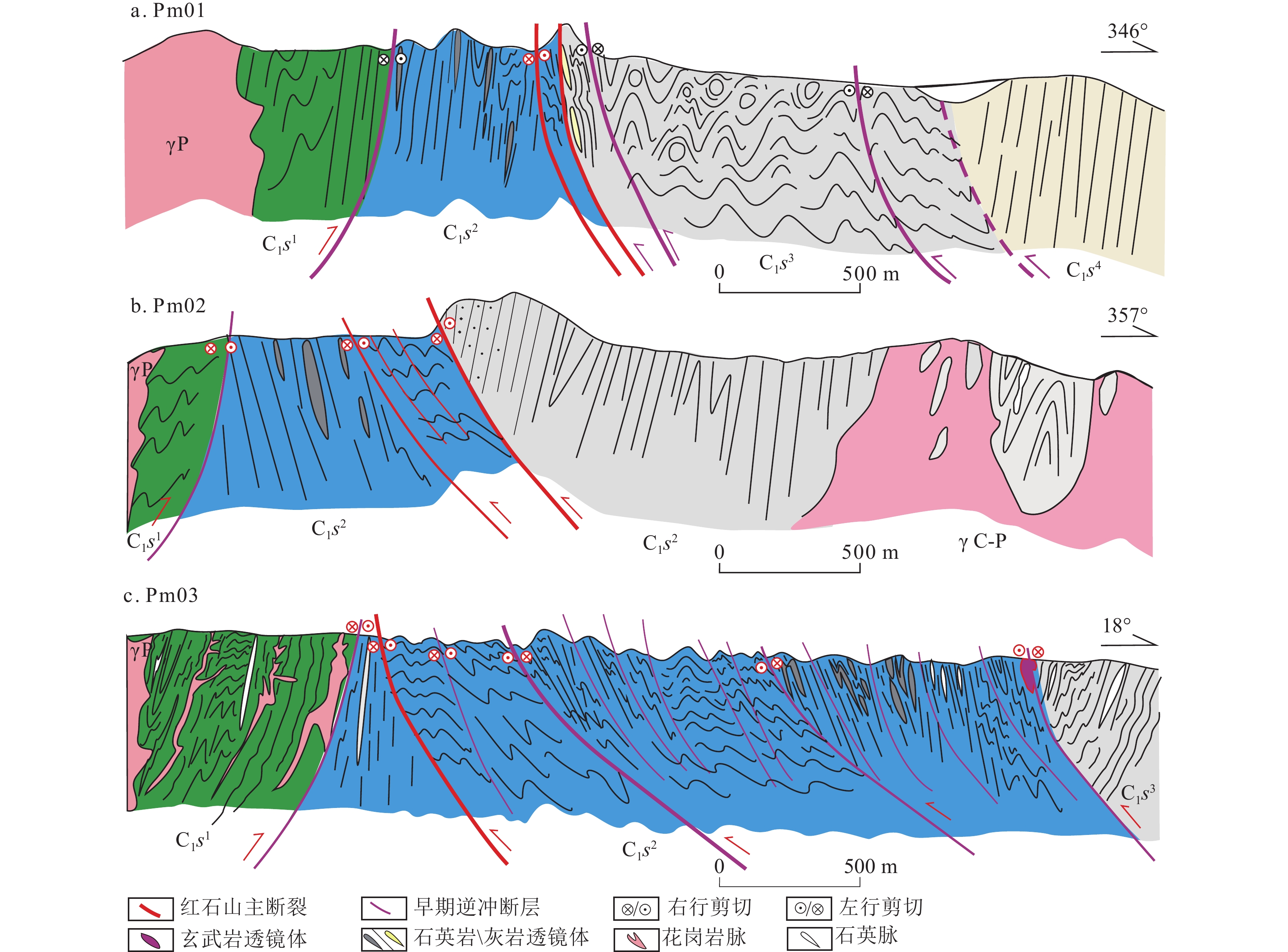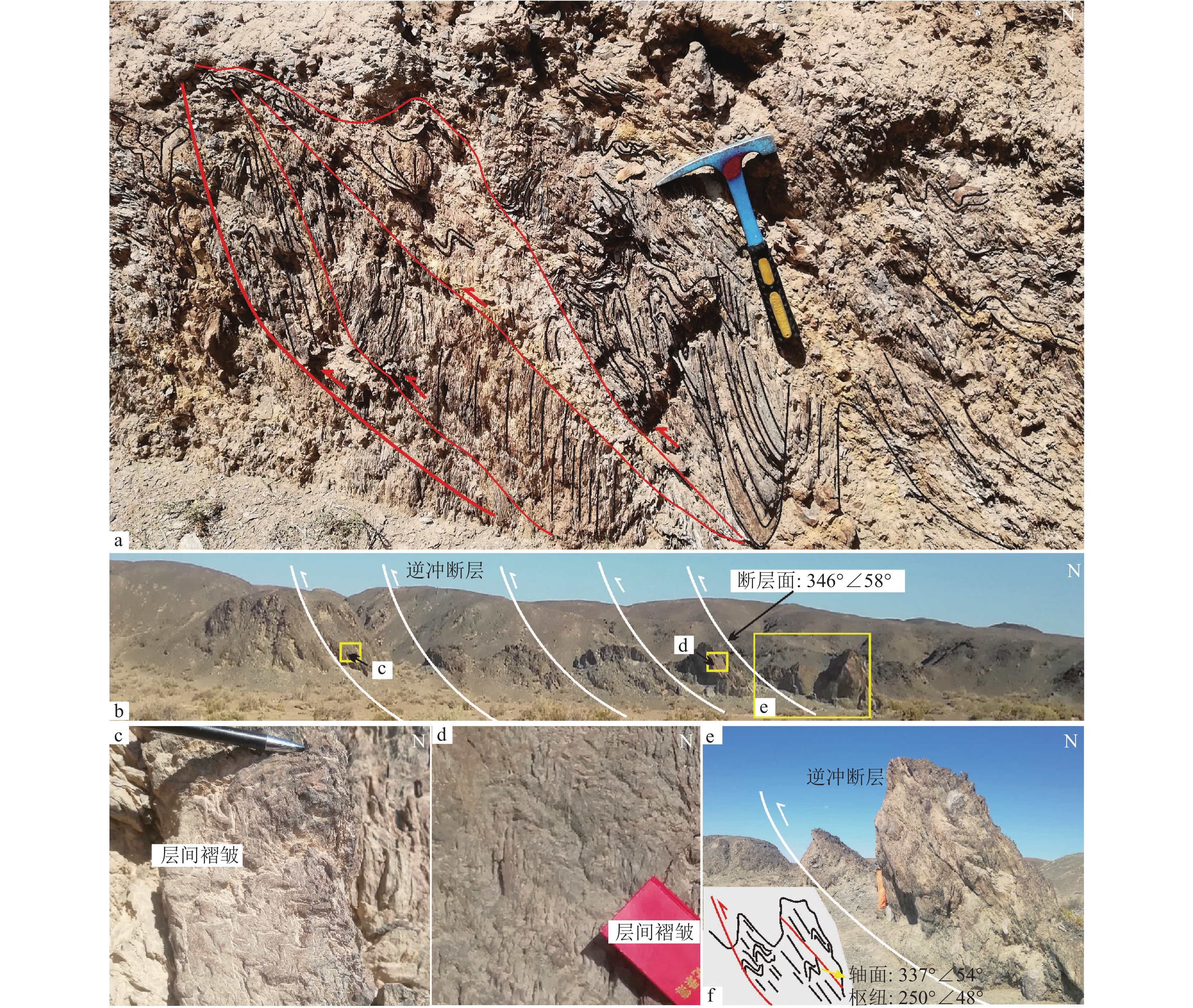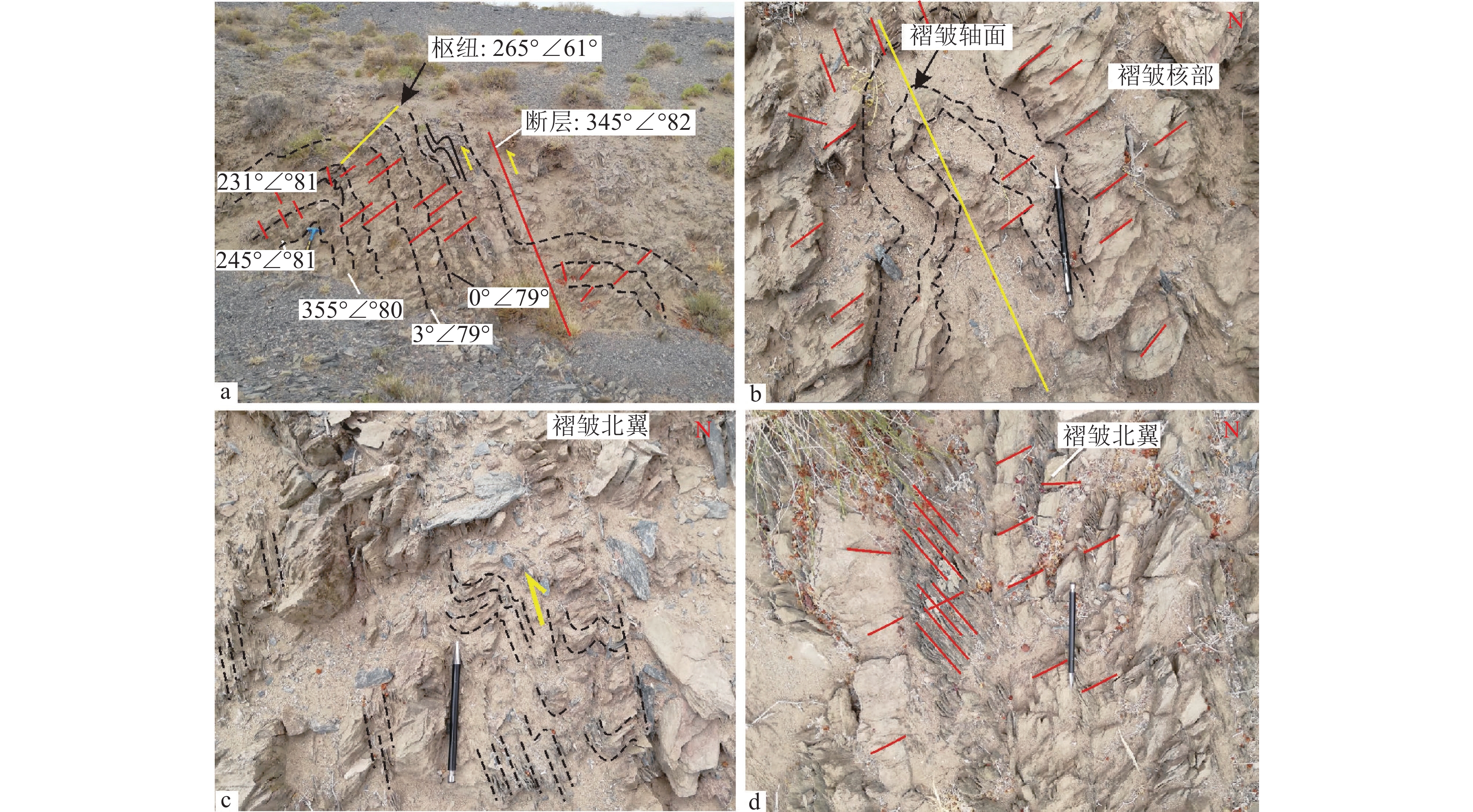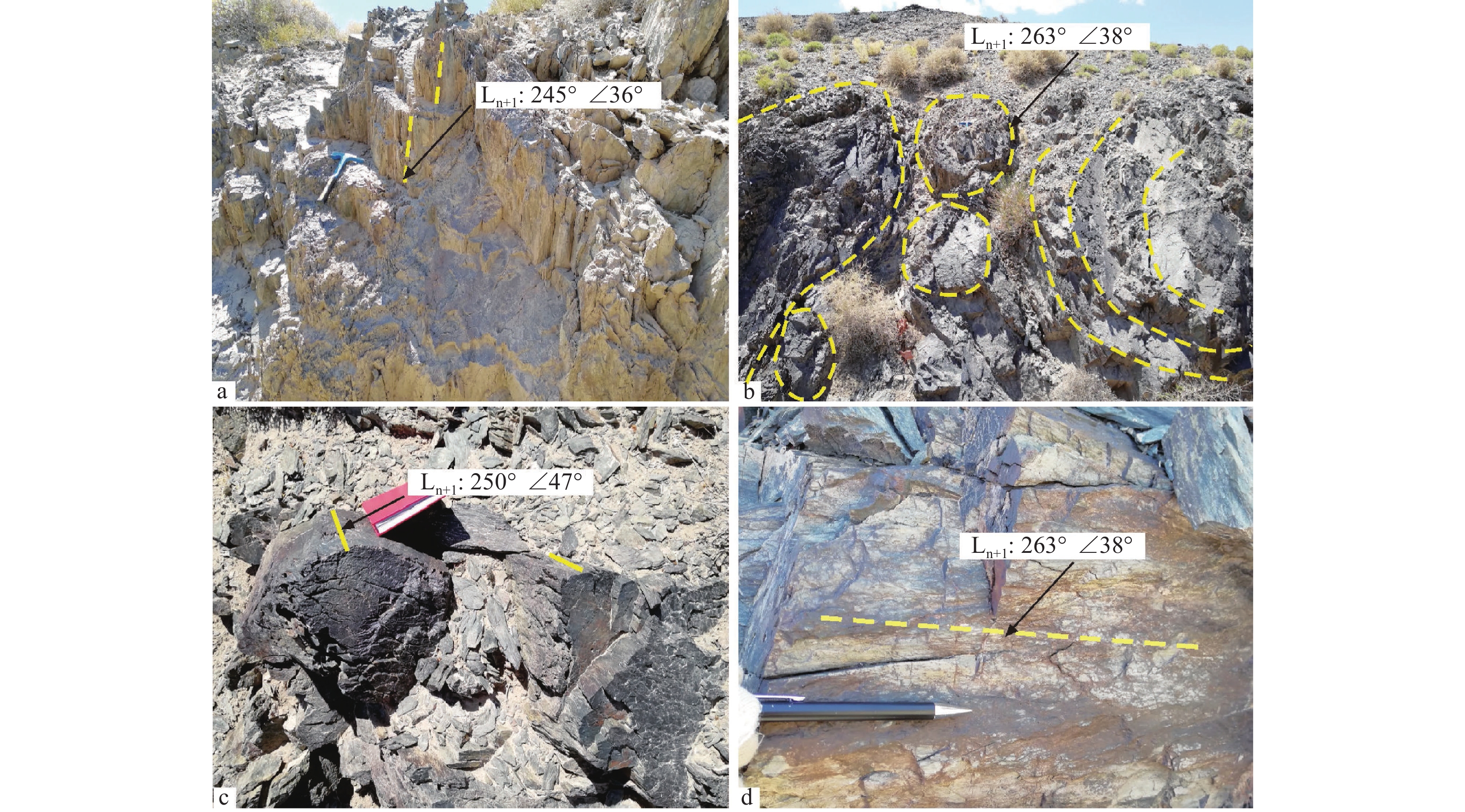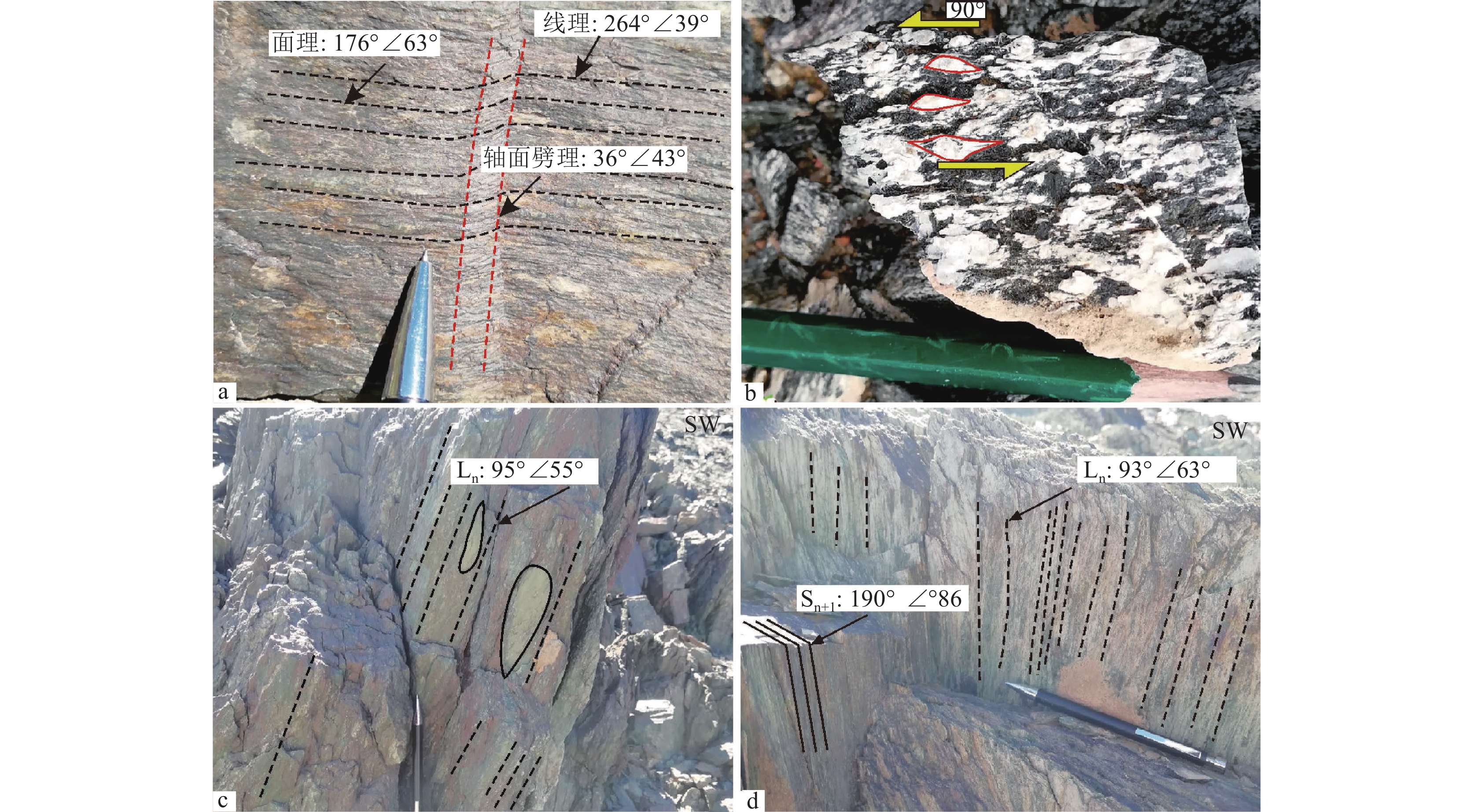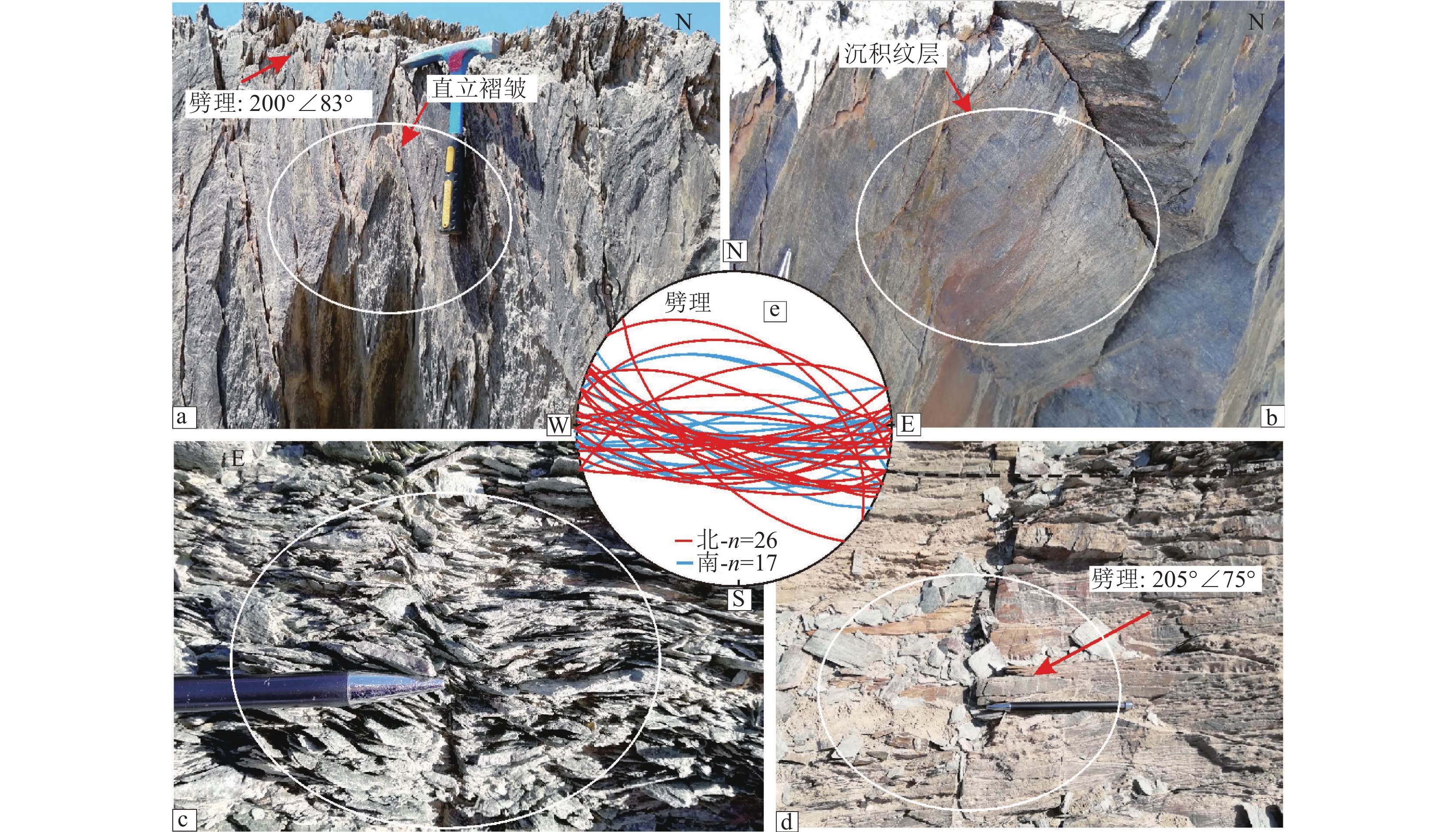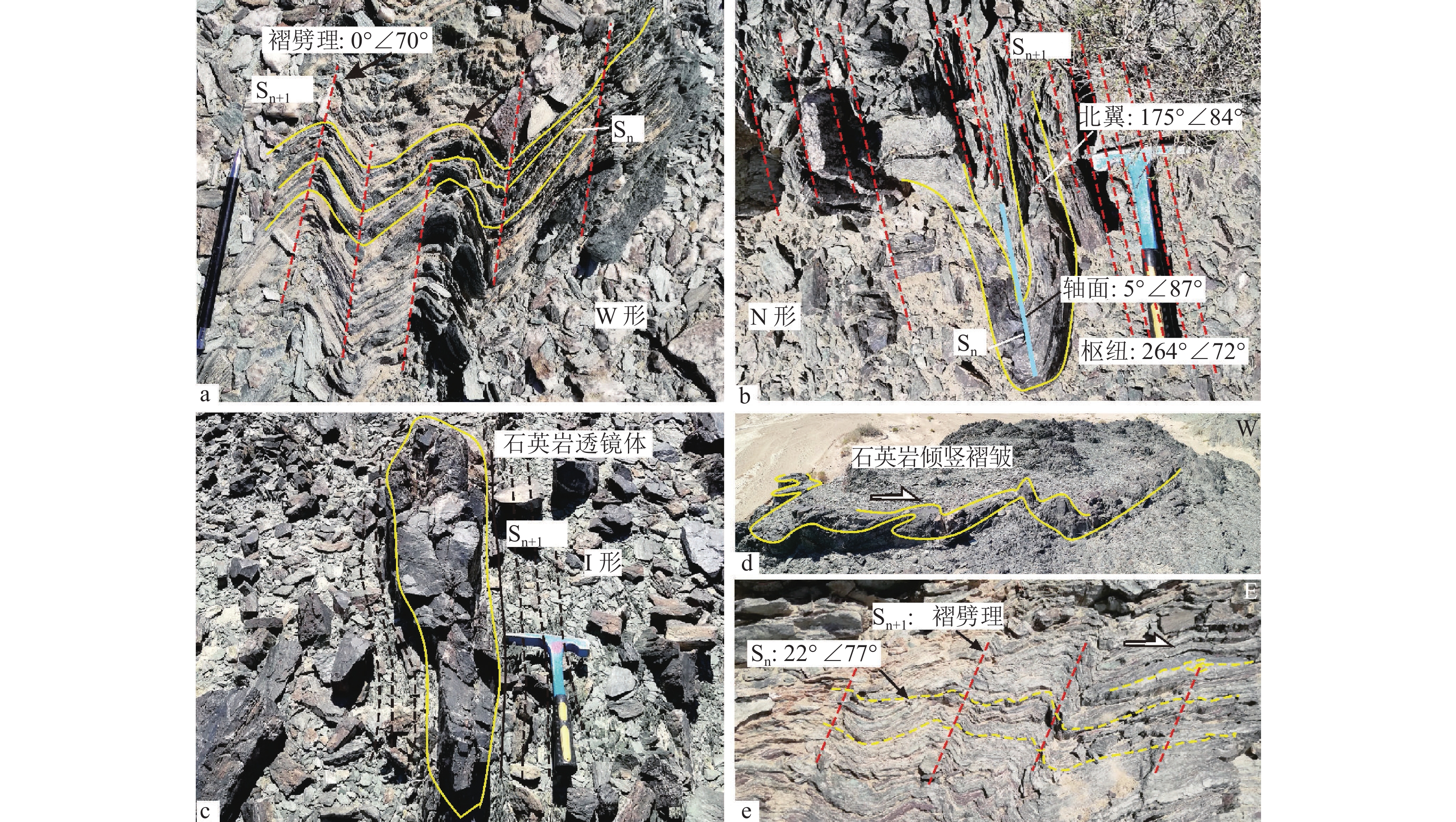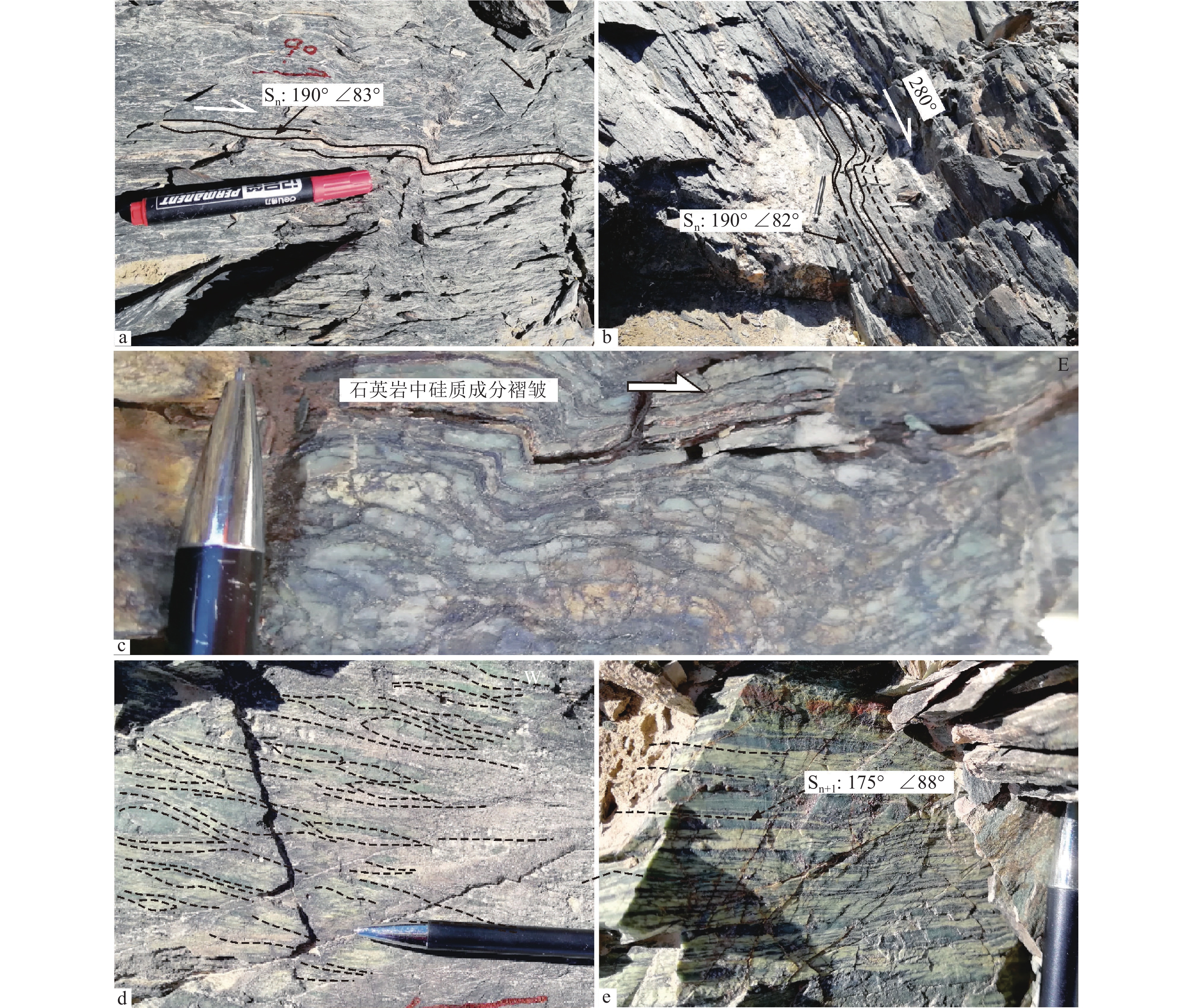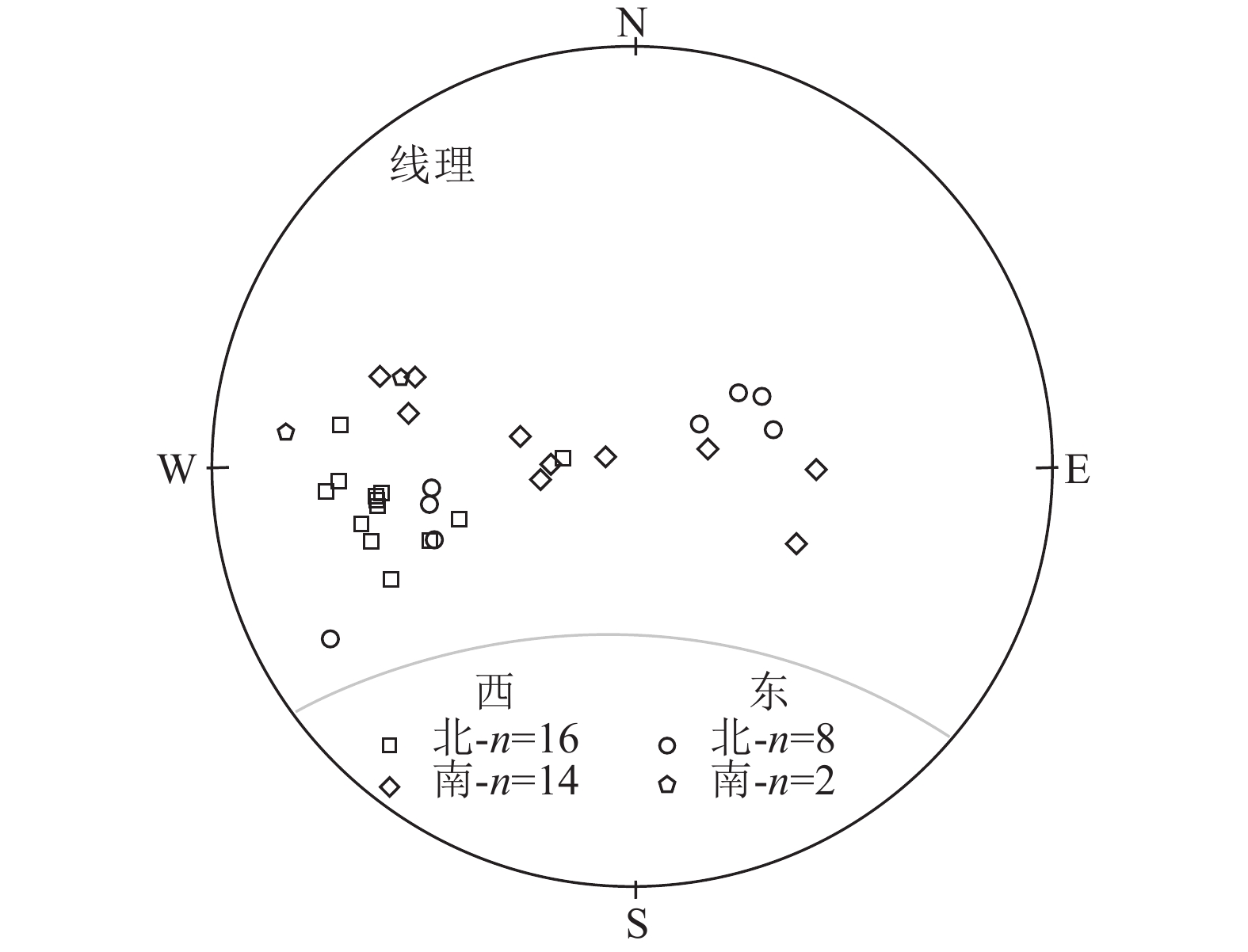Structural characteristics of the Saozishan Formation in the Hongshishan area of the Gansu Beishan and its dynamic background
-
摘要:
甘肃北山地区扫子山组形成于早石炭世,是红石山蛇绿构造混杂岩的重要组成部分,记录并保存了红石山古洋盆形成及演化的地质信息,是讨论红石山地区晚古生代古地理环境及洋盆构造属性的重要窗口。详细的野外地质调查发现,该套地层构造变形强烈,原始层理难以辨识,为研究该套地层的沉积环境增添了难度。基于此,在查明扫子山组物质组成的基础上,通过详细的构造解析,厘定其构造序列,并通过剥离后期构造改造,恢复原始沉积层理。结果表明,扫子山组经历了3期构造变形,第1期为北北西—南南东向逆冲兼左行走滑,可能为洋壳向北俯冲的产物;第2期为北北东—南南西向挤压兼右行走滑脆−韧性变形,可能为碰撞阶段的产物;第3期构造变形以北东—南西向左行走滑为主,为次一级的晚期构造变形。变形样式及变质程度表明,扫子山组以中浅层次构造变形为主,地层未发生明显的倒转和缺失,该套地层物质成分及空间分布具有明显的规律性,显示裂谷型盆地向南趋于成熟的火山-沉积特征。 结合红石山−蓬勃山断裂以北发育石炭纪—二叠纪弧岩浆岩,揭示了红石山古洋盆向北俯冲的动力学过程,为进一步研究中亚造山带南缘构造演化过程提供地质依据。
Abstract:The Saozishan Formation is developed in the Gansu Beishan area, formed in the Early Carboniferous, as an important part of the Hongshishan ophiolitic mélange, which records and preserves the important information about the formation and evolution of the Hongshishan ocean, also an important window to recover the Late Paleozoic paleogeographic environment and property of the ocean basin. According to the field geological investigation, the strata were strongly deformed, and it is very difficult to recognize the primary sedimentary sequence and also to study on the original depositional environment. Therefore, based on the identification of the material composition of the Saozishan Formation, this study determines its deformation sequences through detailed structural analysis, and restores its original sedimentary bedding by excluding later structural modifications. It is shown that the Saozishan Formation has undergone three periods of deformation, in which the first period of deformation is characterized by top-to SSE thrusting with left-lateral strike-slip motion, possibly as the products of the northward subduction of the oceanic crust in the early period; the second period of deformation is characterized by NNE−SSW compression with right-lateral strike-slip motion, possibly as the products of the collision stage; the third period of deformation shows NE−SW trending left-lateral strike-slip motion. Combined with the deformation and metamorphic characteristics, the Saozishan Formation shows characteristics of middle-shallow level deformation, the composition of the Saozishan Formation shows an obvious regularity in the north-south spatial distribution, indicating that the volcanic-sedimentary characteristics gradually matured towards the south of the rift basin. Together with the Carboniferous to Permian arc igneous rocks on the north side of the Hongshishan-Pengboshan fault, the dynamic characteristics of the northward subduction of the Hongshishan ancient ocean basin are revealed, which also provides geological evidence for further study of the tectonic evolution of the southern margin of the Central Asian Orogenic Belt.
-
-
图 1 甘蒙北山地区蛇绿岩带及火山岩分布图(据王国强等,2018修改)
1—奥陶纪火山岩;2—志留纪火山岩;3—泥盆纪火山岩;4—石炭纪火山岩;5—二叠纪火山岩;6—蛇绿岩带及编号;7—断裂及编号;8—研究区;A—红石山−百合山−蓬勃山蛇绿岩带;B—芨芨台子山−小黄山蛇绿岩带;C—红柳河−牛圈子−洗肠井蛇绿岩带;D—辉铜山−帐房山蛇绿岩带;Ⅰ—大南山−公婆泉−黑石山断裂;Ⅱ—卓尔−骆驼泉−西涧泉断裂
Figure 1. Sketch map showing the distribution of ophiolit belts and the vocanic rocks in Beishan
-
Xu X W, Ma T L, Sun L Q, et al. 2003. Characteristics and dynamic origin of the large−scale Jiaoluotage ductile compressional zone in the eastern Tianshan Mountains, China[J]. Journal of Structural Geology, 25(11): 1901−1915.
Wang Y, Li J Y, Sun G H. 2008. Postcollisional eastward extrusion and tectonic exhumation along the eastern Tianshan orogen, Central Asia: Constraints from dextral strike−slip motion and 40Ar/39Ar geochronological evidence[J]. The Journal of Geology, 116(6): 599−618. doi: 10.1086/591993
Wang B, Cluzel D, Jahn B M, et al. 2014. Late Paleozoic pre−and syn−kinematic plutons of the Kangguer−Huangshan shear zone: Inference on the tectonic evolution of the eastern Chinese north Tianshan[J]. American Journal of Science, 314(1): 43−79. doi: 10.2475/01.2014.02
陈文, 孙枢, 张彦, 等. 2005. 新疆东天山秋格明塔什‒黄山韧性剪切带 40Ar/39Ar年代学研究[J]. 地质学报, 79(6): 790−804. doi: 10.3321/j.issn:0001-5717.2005.06.008 方维萱, 郑小明, 方同辉, 等. 2021. 甘肃红石山地区泥盆纪—石炭纪有限洋盆重建与蛇绿混杂岩深部结构[J]. 地质通报, 40(5): 649−673. 甘肃省地质调查院. 2004. 红宝石幅1∶25万区域地质调查[R]. 甘肃省地质调查院. 2009. 甘肃霍勒扎德盖—红石山地区矿产远景调查成果报告[R]. 甘肃省地质矿产勘查开发局. 1989. 区域地质志[M]. 北京: 地质出版社. 甘肃省地质矿产勘查开发局. 1997. 甘肃省岩石地层[M]. 武汉: 中国地质大学出版社. 何世平, 任秉琛, 姚文光, 等. 2002. 甘肃内蒙古北山地区构造单元划分[J]. 西北地质, 35(4): 30−40. doi: 10.3969/j.issn.1009-6248.2002.04.004 何世平, 周会武, 任秉琛, 等. 2005. 甘肃内蒙古北山地区古生代地壳演化[J]. 西北地质, 38(3): 6−15. doi: 10.3969/j.issn.1009-6248.2005.03.002 黄增保, 金霞. 2006. 甘肃北山红石山蛇绿混杂岩带中基性火山岩构造环境分析[J]. 中国地质, 33(5): 1030−1037. doi: 10.3969/j.issn.1000-3657.2006.05.011 刘明强. 2007. 甘肃北山造山带红石山地区埃达克质花岗岩类的发现及其地质意义[J]. 岩石矿物学杂志, 26(3): 232−238. doi: 10.3969/j.issn.1000-6524.2007.03.004 刘明强, 王建军, 代文军. 2006. 甘肃北山红石山地区马鞍山北花岗岩体的单颗粒锆石 U−Pb 年龄及地质意义[J]. 岩石矿物学杂志, 25(6): 473−479. doi: 10.3969/j.issn.1000-6524.2006.06.003 刘雪亚, 王荃. 1995. 中国西部北山造山带的大地构造及其演化[J]. 地学研究, 28: 37−48. 卢进才, 牛亚卓, 魏仙样, 等. 2013. 北山红石山地区晚古生代火山岩LA−ICP−MS锆石U−Pb 年龄及其构造意义[J]. 岩石学报, 29(8): 2685−2694. 聂凤军, 江思宏, 白大明, 等. 2002. 北山地区金属矿床成矿规律及找矿方向[M]. 北京: 地质出版社: 1−499. 牛文超, 辛后田, 段连峰, 等. 2019. 内蒙古北山地区百合山蛇绿混杂岩带的厘定及其洋盆俯冲极性——基于1∶5万清河沟幅地质图的新认识[J]. 中国地质, 46(5): 977−994. doi: 10.12029/gc20190503 彭湘萍, 陈高潮, 李玉宏, 等. 2016. 北山地区红石山蛇绿混杂岩组成及地质意义[J]. 新疆地质, 34(2): 184−191. doi: 10.3969/j.issn.1000-8845.2016.02.006 任云伟, 任邦方, 牛文超, 等. 2019. 内蒙古哈珠地区石炭纪白山组火山岩: 北山北部晚古生代活动陆缘岩浆作用的产物[J]. 地球科学, 44(1): 312−327. 汤家富. 1983. 褶皱包络面的研究与运用[J]. 中国区域地质, 7: 98−104. 汤庆艳, 张铭杰, 李文渊, 等. 2015. 新疆北山二叠纪大型镁铁—超镁铁质岩体的动力学背景及成矿潜力[J]. 中国地质, 42(3): 468−481. doi: 10.3969/j.issn.1000-3657.2015.03.006 王国强, 李向民, 徐学义, 等. 2014. 甘肃北山红石山蛇绿岩锆石U−Pb年代学研究及构造意义[J]. 岩石学报, 30(6): 1685−1694. 王国强, 李向民, 徐学义, 等. 2016. 甘蒙北山志留纪公婆泉群火山岩的地球化学及其对岩石成因和构造环境的制约[J]. 地质学报, 90(10): 2603−2619. doi: 10.3969/j.issn.0001-5717.2016.10.005 王国强, 李向民, 徐学义, 等. 2018. 北山石炭纪—二叠纪火山岩成因及构造背景[J]. 岩石矿物学杂志, 37(6): 884−900. 王凯, 计文化, 孟勇, 等. 2019. 天山造山带东段构造变形对增生造山末期的响应[J]. 大地构造与成矿学, 43(5): 894−910. 王小红, 杨建国, 谢燮, 等. 2013. 甘肃北山红石山基性—超基性岩体的成因类型及构造意义[J]. 西北地质, 46(1): 40−55. doi: 10.3969/j.issn.1009-6248.2013.01.005 王瑜, 李锦轶, 李文铅, 等. 2002. 东天山造山带右行剪切变形及构造演化的40Ar−39Ar年代学证据[J]. 新疆地质, 20(4): 315−319. doi: 10.3969/j.issn.1000-8845.2002.04.004 魏海峰, 张国英. 2008. 北山霍勒扎德盖石炭系扫子山组岩石地层及古孢子化石特征[J]. 甘肃地质, 17(2): 19−23. 魏志军, 黄增保, 金霞, 等. 2004. 甘肃红石山地区蛇绿混杂岩地质特征[J]. 西北地质, 37(2): 13−17. doi: 10.3969/j.issn.1009-6248.2004.02.003 徐旭明, 鲁扬, 辛后田, 等. 2018. 内蒙古北山北缘古亚洲洋闭合时间制约: 来自黑红山晚石炭世石英闪长岩的证据[J]. 矿物岩石, 38(4): 66−75. 徐新忠, 齐雄飞, 扬长来, 等. 1993. 青海花石峡−甘肃阿克塞人工爆破地震测深成果[C]//中国地球物理学会年刊. 北京: 地震出版社. 杨合群, 李英, 赵国斌, 等. 2010. 北山蛇绿岩特征及构造属性[J]. 西北地质, 43(1): 26−36. doi: 10.3969/j.issn.1009-6248.2010.01.002 杨镇熙, 丁书宏, 张晶, 等. 2023. 甘肃北山南带前红泉金矿的发现及其找矿意义[J]. 西北地质, 56(6): 274−284. 赵茹石, 周振环, 毛金海, 等. 1994. 甘肃省板块构造单元划分及其构造演化[J]. 中国区域地质, (1): 28−36. 赵志雄, 熊煜, 贾元琴, 等. 2018. 北山独龙包地区晚石炭世陆缘弧岩浆作用——花岗闪长岩锆石U−Pb年龄及地球化学证据[J]. 地质论评, 64(3): 597−609. 张新虎, 刘建宏, 徐家乐, 等. 2005. 论甘肃省的板块构造[J]. 甘肃地质学报, 14(2): 1−10. 张振亮, 冯选洁, 赵国斌, 等. 2022. 东天山—北山地区中生代内生矿床成矿规律[J]. 西北地质, 55(4): 280−299. 左国朝, 何国琦, 李红诚, 等. 1990. 北山板块构造及成矿规律[M]. 北京: 北京大学出版社. -
期刊类型引用(2)
1. 杨旭明,文鹏帆,张春亢,张显云,康雅敬. 基于GTWR-LightGBM模型的京津冀地区近地面SO2浓度估算. 环境科学与技术. 2024(10): 204-215 .  百度学术
百度学术
2. 叶烨,叶晗迪,鲍杰利. 基于改进Adaboost算法的分布式光伏发电孤岛检测方法. 机电技术. 2024(05): 14-17+33 .  百度学术
百度学术
其他类型引用(1)



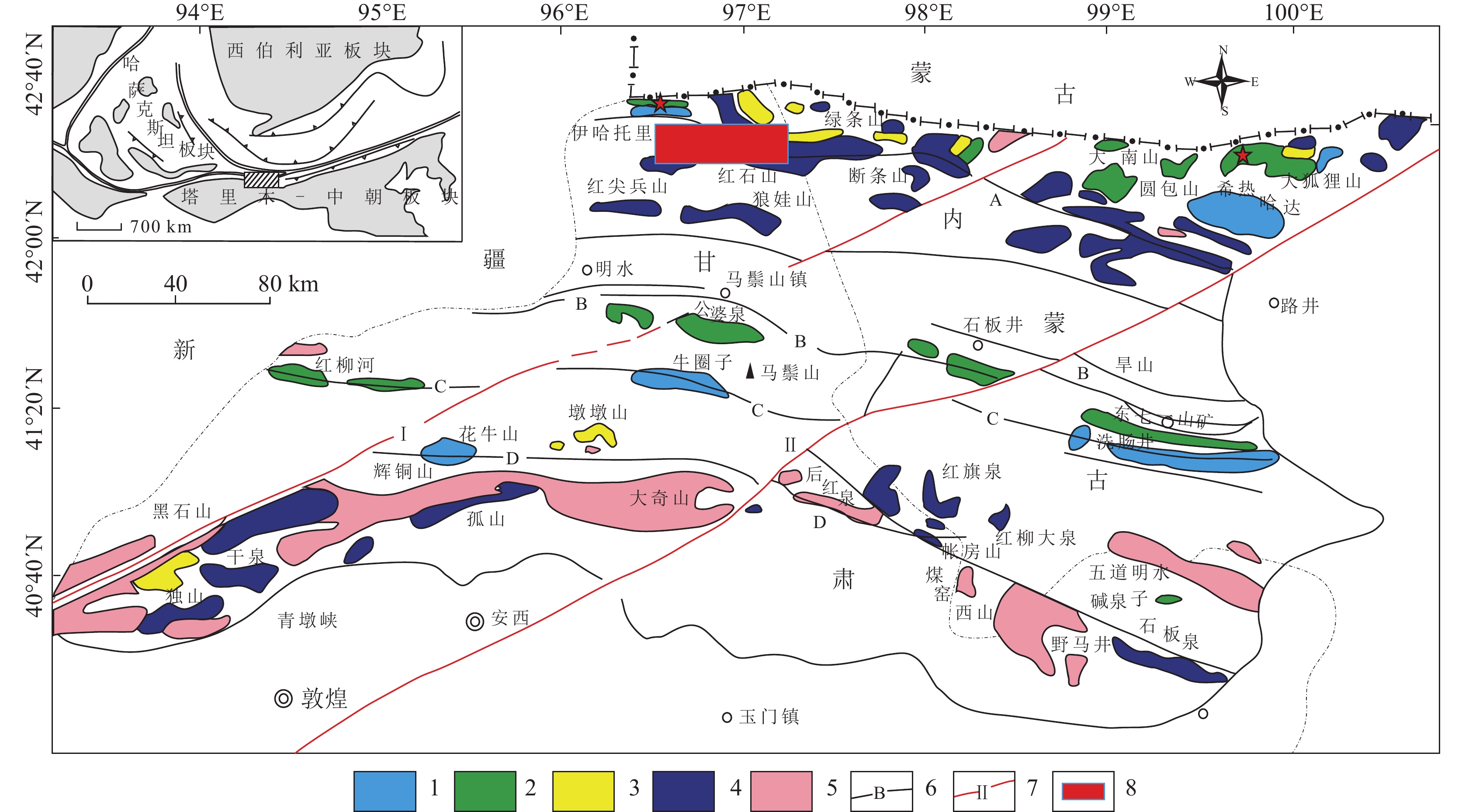
 下载:
下载:

